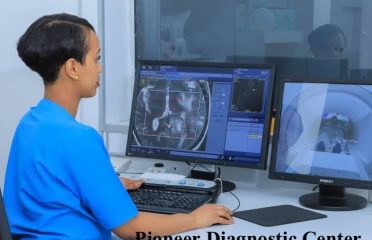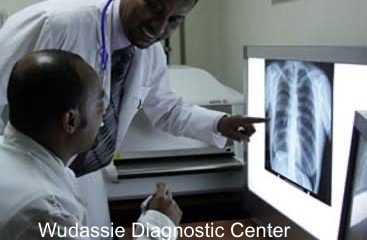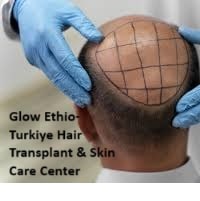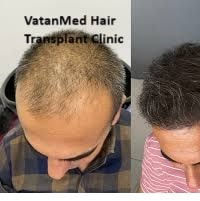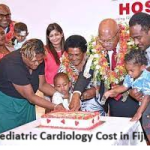Top 10 Pediatric Cardiology Treatments Cost in Ethiopia
1. Bentall’s Procedure Cost in Ethiopia – $13,084
The Bentall procedure is a treatment to replace a portion of the aorta and the aortic valve of the heart due to an aneurysm in the aorta. The main blood channel that delivers oxygenated blood from the heart is known as the aorta. The aorta’s blood arteries deliver oxygenated blood to every part of the body. Blood cannot flow backward into the heart because of the aortic valve, which is located right where the aorta joins the heart. An aneurysm, which is the medical word for a blood artery that balloons out and enlarges above its normal size, can sometimes develop in the aortic root. When that occurs, it may also have an impact on how well the valve works. A type of open-heart surgery called the Bentall operation replaces the aortic valve and aortic root. The cost of Bentall procedure in Ethiopia is $13,084.
2. Aortic Arch Repair Cost in Ethiopia – $11,775
A type of congenital cardiac issue, aortic arch anomalies are a disease or defect that exist from birth. It is an uncommon disorder when the aorta does not develop properly, restricting blood flow throughout the body of your kid. Blood is transported from your infant’s heart to the rest of its body by the aorta, a sizable blood vessel. Normally, it has the shape of a candy cane, however in this instance, the arch is missing or broken. Early in a baby’s life—often within the first few days—surgery is performed. The aorta will be rebuilt into a vessel of normal size once the surgeon closes the gap in the vessel. In Ethiopia, the cost of Aortic Arch Repair is $11,775.
3. Atrial Septal Defect Closure (ASD) Cost in Ethiopia – $9,421
ASD closure is a treatment to patch up a hole in your heart known as an atrial septal defect (ASD). An abnormal opening in the wall (septum) separating your heart’s two upper chambers is known as an atrial septal defect (ASD). Every newborn has a tiny opening there. Several weeks or months after delivery, the hole generally closes. However, occasionally a kid is born with a bigger hole that doesn’t close properly. If the hole is small, it might not be problematic or require any care. However, a big ASD might cause blood to seep into the incorrect heart chambers. To prevent further cardiac problems and injury, surgeons frequently perform ASD closure on infants. It involves either open cardiac surgery or a catheter-based minimally invasive technique to implant the closure device. The cost of Atrial Septal defect closure in Ethiopia is $9,421.
4. Ventricular Septal Defect (VSD) treatment Cost in Ethiopia – $9,421
A hole in the heart is known as a ventricular septal defect (VSD). It is a typical birth abnormality of the heart (congenital heart defect). The lower chambers of the heart’s wall have a hole in them (ventricles). A VSD alters the way that blood travels through the heart and lungs. Instead of pumping oxygen-rich blood out to the body, it returns to the lungs. Blood with and without oxygen combines. These changes may cause an increase in pulmonary blood pressure, which would make the heart work harder to pump blood. Small ventricular septal defects might not be problematic. Many minor VSDs close on their own. Babies with medium-sized or bigger VSDs may require surgery at a young age to avoid problems. In Ethiopia, the cost of VSD is $9,421.
5. Ebstein Repair Cost in Ethiopia – $10,467
A very unusual birth abnormality of the heart is called the Ebstein anomaly. The flaps (leaflets) of the tricuspid valve are deformed and in the incorrect location with this disorder. The valve consequently malfunctions. It’s possible for blood to seep back through the valve, which would make the heart perform less effectively. Cardiac failure and heart enlargement are some complications of the Ebstein abnormality. Regular heart monitoring may be sufficient if your child has no symptoms or signs of the Ebstein abnormality. If the signs and symptoms worry you or if your child’s heart is expanding or weakening, you might need treatment. Surgery and medication are available as treatment options. The best course of action for your child will be discussed by the pediatric cardiologist. The cost of Ebstein Repair in Ethiopia is $10,467.
6. ROSS Procedure Cost in Ethiopia – $15,701
A form of surgery called a Ross procedure can correct a congenital abnormality in the heart’s aortic valve. Normally, the aortic valve consists of three tiny leaflets. Sometimes, only one or two leaflets instead of three develop. These leaflets could be unusually rigid and dense. The valve may not be able to open as easily as it should as a result when the heart contracts. To get blood out to the body in this situation, the left side of the heart must work much harder. This may cause cardiac muscle damage over time. It may result in a condition known as aortic stenosis.
The aortic valve does not open properly in aortic stenosis due to abnormal anatomy. This anomaly is frequently present from birth. A surgeon removes the problematic aortic valve during a Ross procedure. The surgeon then inserts the child’s own pulmonary valve in its place. The pulmonary valve is changed using a conduit, a valve taken from a deceased donor. In Ethiopia, the cost of ROSS procedure is $15,701.
7. Coarctation Repair Cost in Ethiopia – $7,328
Aorta coarctation is a congenital cardiac abnormality in which the main artery in your baby’s body, the aorta, is compressed or narrowed in one place. This limits the lower body’s natural blood flow. Catheterization or surgery can fix the issue and treat symptoms. Even after a repair, long-term follow-ups are crucial. Treatment for aortic coarctation is necessary to avoid severe consequences. When an aortic coarctation is identified, either surgery or balloon angioplasty should be carried out. The cost of Coarctation Repair in Ethiopia is $7,328.
8. Fontan Procedure Cost in Ethiopia – $11,775
Children with univentricular hearts may undergo the Fontan operation, also known as the Fontan-Kreutzer procedure, as a palliative surgical procedure. It involves redirecting venous blood away from the morphologic right ventricle and into the pulmonary arteries from the inferior vena cava & superior vena cava; in other words, the systemic and pulmonary circulations are connected to the functional single ventricle in this way. The cost of Fontan procedure in Ethiopia is $11,775.
9. Truncus Arteriosus Repair Cost in Ethiopia – $15,701
Two major blood arteries normally leave the heart. The aorta, which transports blood to the body, is one. The pulmonary artery, which supplies blood to each lung, is the other. Instead of having individual three-leaf valves for the pulmonary artery and aorta. When a baby has truncus arteriosus, there is just one large blood vessel, or “trunk,” that leaves the heart. It then divides into blood vessels that travel to the body and lungs. An infant with truncus arteriosus experiences issues within the first week of life. His or her oxygen levels are frequently below average. Stabilizing the infant is the first step in the initial treatment. Congestive heart failure medications are frequently started. After the baby is stable, surgery is often performed in the first few weeks of life. The cost of Truncus Arteriosus repair in Ethiopia is $15,701.
10. Norwood Operation Cost in Ethiopia – $23,553
For newborns born with hypoplastic left heart syndrome, the Norwood Operation is a type of open-heart surgery. It is usually carried out during the first few weeks of life. Because the left ventricle and aorta of newborns with hypoplastic left heart syndrome are too tiny to adequately pump blood to the body, they require the Norwood procedure. The Norwood operation enables the right ventricle to circulate blood to the body. The cost of Norwood Operation in Ethiopia is $23,553.


